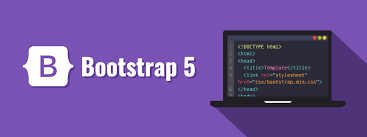Bootstrap, one of the most popular front-end frameworks, empowers developers to create stunning and functional web applications with ease. One crucial aspect of web development is form validation, and email validation, in particular, plays a significant role. In this comprehensive guide, we'll delve into the world of Bootstrap email validation, teaching you how to enhance your forms and improve user experience.
The Significance of Email Validation
Email validation is an essential feature for any web application that collects user data. It ensures that users provide accurate and properly formatted email addresses. Here are some reasons why email validation is crucial:
1. Data Accuracy
Email validation helps maintain the integrity of your database by preventing the entry of incorrect or fake email addresses.
2. User Experience
Well-designed email validation enhances user experience by providing instant feedback, reducing errors, and making the form-filling process smoother.
3. Security
Valid email addresses are essential for password resets, notifications, and other communication with users. Ensuring email accuracy is a security measure.
4. Spam Prevention
Validating email addresses can help prevent spammy or malicious users from abusing your platform.
Bootstrap and Form Validation
Bootstrap simplifies the process of adding form validation to your web applications. It provides a range of classes, components, and JavaScript plugins that streamline the creation of user-friendly and robust forms. Here's how you can leverage Bootstrap for email validation:
1. HTML Structure
Start by creating the HTML structure of your form using Bootstrap's predefined form components. Ensure that the form element has the novalidate attribute to disable the browser's default validation. This allows you to handle validation using JavaScript.
<form id="myForm" novalidate>
<div class="mb-3">
<label for="email" class="form-label">Email address</label>
<input type="email" class="form-control" id="email" placeholder="[email protected]" required>
</div>
<button type="submit" class="btn btn-primary">Submit</button>
</form>
2. JavaScript Validation
Use JavaScript to handle email validation. You can add event listeners to the form and check the email input's validity using the checkValidity() method.
const form = document.getElementById('myForm');
const emailInput = document.getElementById('email');
form.addEventListener('submit', (e) => {
e.preventDefault();
if (emailInput.checkValidity()) {
// Email is valid; submit the form or perform further actions.
} else {
// Email is invalid; provide feedback to the user.
}
});
3. Providing Feedback
Bootstrap offers various classes to provide visual feedback to users. You can use classes like is-valid and is-invalid to style your input elements based on their validation status.
if (emailInput.checkValidity()) {
emailInput.classList.remove('is-invalid');
emailInput.classList.add('is-valid');
} else {
emailInput.classList.remove('is-valid');
emailInput.classList.add('is-invalid');
}
4. Custom Error Messages
Customize error messages by using Bootstrap's data-bs-error attribute. This allows you to provide context-specific feedback to users.
<input type="email" class="form-control" id="email" placeholder="[email protected]" required
data-bs-error="Please enter a valid email address">
Common Questions about Bootstrap Email Validation
1. Is Bootstrap the only way to perform email validation in forms?
No, Bootstrap is not the only way. While Bootstrap provides convenient classes and components for form validation, you can achieve email validation using plain HTML and JavaScript as well.
2. Can I customize the error messages in Bootstrap forms?
Yes, Bootstrap allows you to customize error messages by using the data-bs-error attribute. You can provide user-friendly and context-specific error messages.
3. Are there any Bootstrap plugins for email validation?
While Bootstrap itself does not offer specific plugins for email validation, you can find JavaScript libraries and plugins that work seamlessly with Bootstrap to enhance form validation further.
4. Is email validation the same as email verification?
No, email validation and email verification are different processes. Email validation ensures that the provided email address is correctly formatted, while email verification typically involves sending a verification link or code to the email address to confirm its ownership.
Wrapping Up
Bootstrap simplifies the process of adding email validation to



